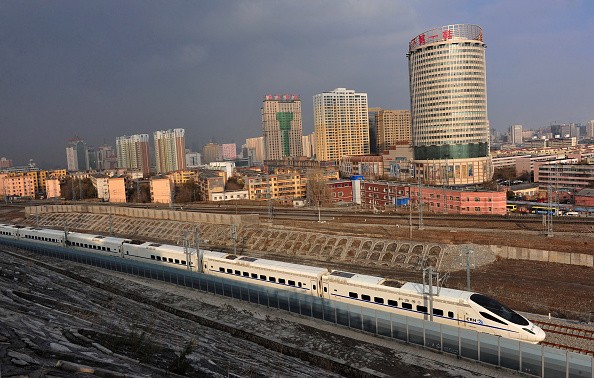China's strategy to export its expensive high-speed railway technology is losing steam with most of the rail projects having been stalled due to lack of financial strength.
Dou Xin, a spokeswoman for CRRC Qingdao Sifang, one of China's biggest locomotive and rolling stock manufacturers, described high-speed railways and bullet trains as "unimaginably expensive."
She added that there has yet to be a case of China very successfully exporting high-speed rail.
Yi Min, chief advisor at MTR Hong Kong on China business, noted that a strong commuter base is necessary to support an expensive rail network since the biggest issue is who is going to pay.
Geographic difficulties in building bridges and tunnels to make the passage of high-speed trains easier and quicker add to the costs.
Qingdao Sifang's plan to build a high-speed rail project in Mexico was aborted after the latter canceled the 210 km rail link as part of its budget cuts.
China's has a "One Belt, One Road" initiative to increase trade and infrastructure links with other countries from Asia to Africa, that includes the construction of high-speed railways abroad.
Chinese leaders are now making more trips overseas to close high-speed rail contracts, but many of the deals suffer delays due to lack of budget.
An example is the suspension of the $5.1 billion Jakarta to Bandung 150 km high-speed railway project in January last year. It finally got an operational permit last month.
The project was criticized in Indonesia for its high cost that would take the budget away from less-developed regions.
Furthermore, XpressWest's planned project with China Railway International for a high-speed link from Las Vegas to Los Angeles was terminated last year.
Among the few successful Chinese high-speed railway projects overseas is the one linking Ankara to Istanbul.
On the other hand, high-speed rail networks are successful in China due to its big population and vast land area where there is always a suitable place for the railways, according to Dou.
As of the end of 2016, China had a 124,000 km rail network. It features the world's largest high-speed rail network that covers over 22,000 km. China plans to increase the coverage of high-speed railways to 30,000 km by 2020 that connects over 80 percent of the country's big cities. Bullet trains in China are cutting travel times in half.



























